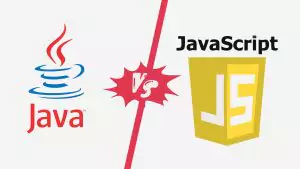Java, a robust and widely adopted programming language, has evolved over the years. One of the features added in Java 8 is the method reference (the :: operator), which is often used as a more concise alternative to lambda expressions. We will explore method references in depth, delving into various types such as static method references, instance method references, arbitrary object method references, and constructor references.
Introduction to Method References
In Java, method references, like the :: operator, allows us to refer to methods without executing them and are used to call a method by referring to it with the help of its name. They:
- Provide a simplified way to use methods as arguments;
- Complement lambda expressions by offering a more succinct syntax in specific cases.
Static Method Reference
When referring to static methods, method references become particularly helpful. Let’s consider a scenario where we have a static method printAddition inside a Maths inner class. Typically, with lambda expressions, the syntax to call this static method would look something like:
BiFunction<Integer, Integer, Integer> add = (a, b) -> Maths.printAddition(a, b);
However, by using a static method reference, this can be simplified to:
BiFunction<Integer, Integer, Integer> add = Maths::printAddition;
In the Main main method, this reference variable can be used to call the static method as follows:
int result = add.apply(5, 3);
System.out.println("The sum is: " + result);
This is more readable and concise compared to using a full lambda expression.
Instance Method Reference
Now let’s say you have an instance method called printMessage that you want to use in a similar fashion. One of the ways to do this is by using a functional interface. For example, let’s say you have a Runnable interface. Normally, you might use a lambda expression like this:
Runnable run = () -> someInstance.printMessage();
With an instance method reference, it gets simplified to:
Runnable run = someInstance::printMessage;
This can be used in your program to effectively print out a message.
Method Reference to Arbitrary Object
In some cases, you might want to call a method on arbitrary objects of a particular type rather than a specific instance. For instance, let’s say you have a Subject class, and you want to print the name of each Subject in a list. You might use a lambda expression like this:
List<Subject> subjects = ...;
subjects.forEach(s -> s.print());
With a method reference to an arbitrary object, this becomes:
subjects.forEach(Subject::print);In a program like SubjectDemo, this can make it more concise and easier to understand. You will be able to manipulate and work with lists of objects such as Subject much more efficiently.
Constructor Reference
Another powerful feature is the ability to refer to constructors using method references. For instance, if you have a class Geography and you want to create a new instance of Test using a method in the BiFunction interface, you can use a constructor reference. Normally, with lambda expressions, you might do this:
BiFunction<String, Integer, Test> createTest = (name, score) -> new Test(name, score);
This can be simplified using a constructor reference like this:
BiFunction<String, Integer, Test> createTest = Test::new;Conclusion
The method reference feature in Java (::) is often used in conjunction with lambda expressions and helps in achieving more concise and readable code. We looked at static method references, instance method references, arbitrary object method references, and constructor references. With their help, you can simplify the way you call a method, whether it belongs to an inner class, like, or is part of your main program. Method references are an essential tool in the modern Java programmer’s toolkit. By understanding and using them effectively, you can write more efficient, readable, and cleaner code.
FAQ
How is the “::” operator used in Java?
The :: operator in Java, known as the method reference operator, is a shorthand notation for referring to methods or constructors without actually invoking them. This proves to be extremely useful for passing methods as arguments to higher-order functions and often helps in making the code more concise and readable.
What are the different ways to use “::” in Java?
The :: operator can be used in Java in various ways. First, it can be used as a Static Method Reference, where it refers to a static method of a class, using the syntax ClassName::staticMethodName. Secondly, it can be used as an Instance Method Reference of a Particular Object, where it refers to a method of a specific object, using the syntax objectInstance::methodName. Thirdly, as an Instance Method Reference of an Arbitrary Object of a Particular Type, which is used to call a method on instances of a certain type but not a specific instance, using the syntax ClassName::methodName. Lastly, it can be used as a Constructor Reference to refer to a constructor, using the syntax ClassName::new.
Is the “::” operator specific to Java or used in other programming languages as well?
The :: operator, in the context of method reference, is specific to Java and was introduced in Java 8. However, it’s important to note that other programming languages might use the :: symbol for different functionality. For example, in C++, the :: operator is used as the scope resolution operator.
How to call a method using “::” in Java?
The :: operator is not used for directly calling a method. Instead, it is used for creating a reference to a method. This reference can be passed around, for instance as an argument to higher-order functions, or for constructing objects through functional interfaces. One common use case is with the forEach method of a collection to pass a method that will be executed for each element in the collection. For example, you might use it to print out all the elements in a list.
What are common mistakes when using “::” in Java?
There are a few common mistakes that developers make when using the :: operator in Java. One mistake is attempting to use parameters when creating a method reference, which should not be done as method references should not contain any parameters. Another mistake is not understanding that constructor references must be used in conjunction with a functional interface, and one cannot directly create an object by just using ClassName::new. There is also a common confusion between referencing a method on a specific instance versus on an arbitrary object of a certain type. Finally, a common error is attempting to use a method reference with a functional interface whose abstract method is not compatible with the method being referenced. It is important that the signature of the method reference matches that of the abstract method defined in the functional interface.
Follow us on Reddit for more insights and updates.





Comments (0)
Welcome to A*Help comments!
We’re all about debate and discussion at A*Help.
We value the diverse opinions of users, so you may find points of view that you don’t agree with. And that’s cool. However, there are certain things we’re not OK with: attempts to manipulate our data in any way, for example, or the posting of discriminative, offensive, hateful, or disparaging material.